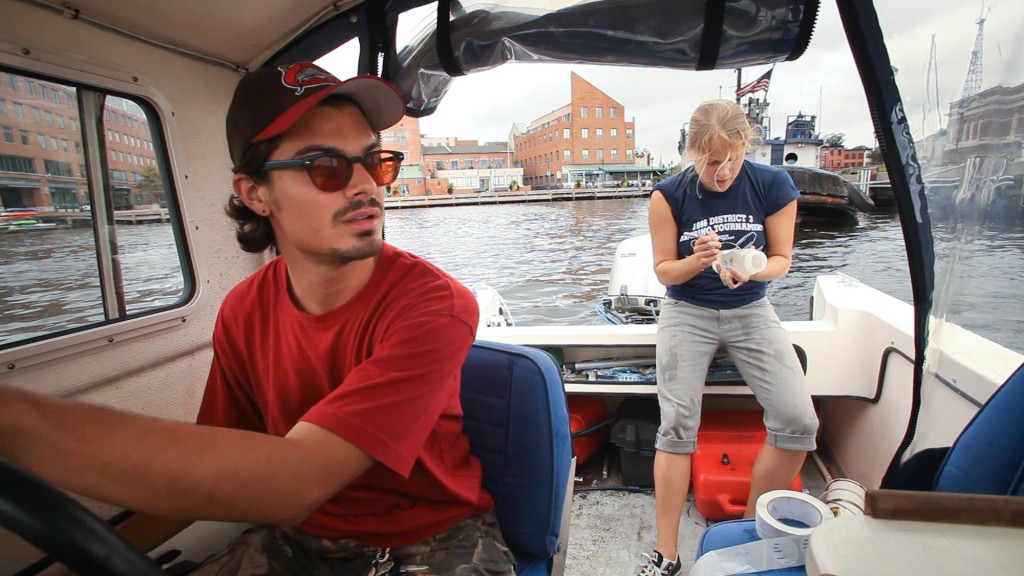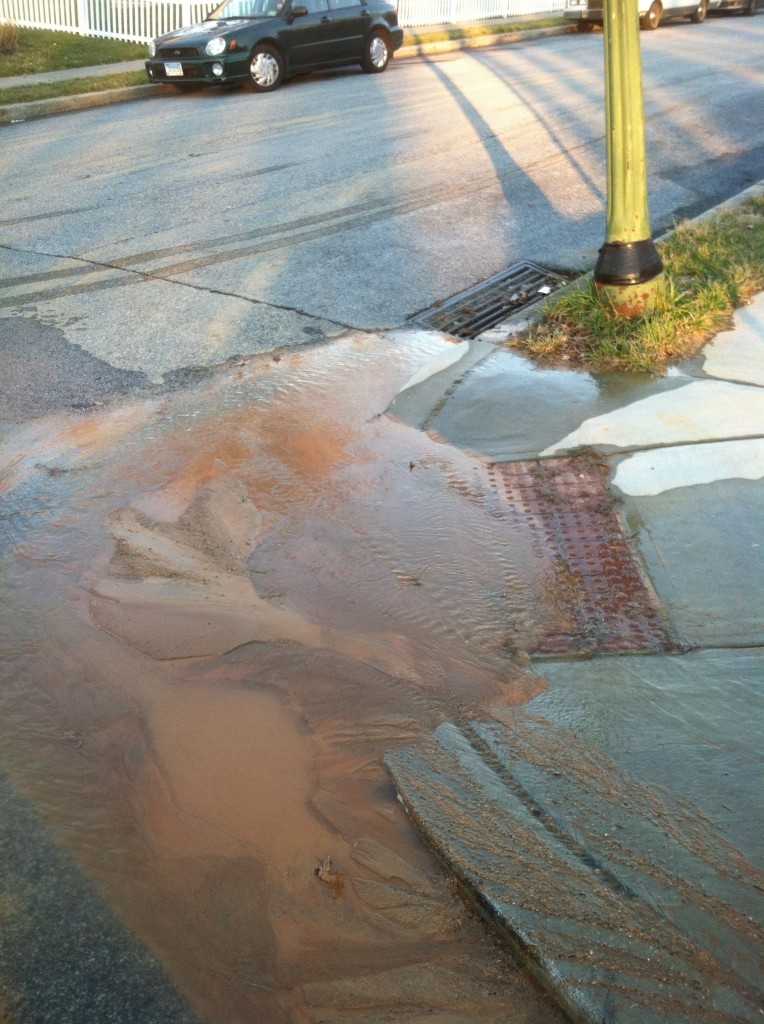Our Favorite Pollution Reports of the Year
This post is a joint entry by Debra Lenik, Volunteer Coordinator, and David Flores, Program Manager for Water Quality and Pollution Monitoring.
Debra:
I may complain about long hours in the field during the spring and fall, but by the time January comes around, I’m definitely itching to be outside again. So when I received a phone call from a long-time Adopt-A-Stream volunteer reporting some suspiciously cloudy water, I gladly volunteered to check it out. We brought along our ammonia-nitrogen photometer in anticipation of a sanitary sewer overflow, but when we arrived at the scene—Herring Run at the Cold Spring Lane bridge near Morgan State—we realized the cloudiness was due to sediment pollution. We pulled on our boots and tracked the sediment upstream, checking out the confluence of the Chinquapin Run and the Herring Run and then following the Herring Run further up to the next tributary. We practically ran right into the problem; it turned out that the city was repairing a water main break, but had neglected to put up the proper sediment traps to prevent the mountains of soil from washing straight down the storm drain. You might think, “Well…dirt’s natural, right?” But sediment is actually one of the biggest pollutants of the Chesapeake Bay, and construction runoff is a primary source.
David:
A construction company’s storage facility in Baltimore County, located immediately adjacent to a stream, was reported to us in May by an Adopt-A-Stream volunteer who was concerned about sediment storage practices on site. Following initial reporting to the Maryland Department of the Environment (MDE) and Baltimore County Department of Environmental Protection & Sustainability, as well as several follow-up Public Information Requests to the MDE Compliance Program through November, we learned that our volunteer’s concerns were completely valid. Furthermore, the facility lacked the required stormwater and industrial permitting and related control measures; it had illegally encroached upon stream buffers; and the owners had improperly stored petroleum products and other pollutants throughout the site. In spite of the flagrant violations of state and Federal law at this facility, the issue has not been resolved by MDE to date, and we plan to follow up when our new Baltimore Harbor WATERKEEPER joins us in February.

Currently, our water quality monitoring program is chiefly staff-based and includes weekly sampling by boat of the Northwest Branch (“Baltimore Harbor”) and Middle Branch of the Patapsco River for bacteria. This is supplemented by our Adopt-A-Stream program, which offers both introductory and advanced trainings so that citizens can learn to recognize and respond to sewage and sediment pollution in local streams. Now, we are extremely excited to report that our water quality monitoring program will get a huge boost in 2012 and 2013 thanks to a two-year grant from the Abell Foundation!
Our monitoring program will be expanded to assess watershed health on an annual basis with the eventual goal of producing a 2012 Baltimore Harbor Report Card in spring 2013, modeled after the annual report card produced for the Chesapeake Bay and other tributaries. This will provide numerous opportunities for watershed volunteers to help our staff collect data not only for bacterial counts, but also for additional water-quality parameters, including dissolved oxygen, water clarity, total nitrogen, total phosphorus, and chlorophyll a. Moreover, our Report Card Monitoring Program will expand its scope in 2013 to include an additional 60 sampling sites throughout the Jones Falls and Gwynns Falls watersheds. Altogether, the next few years will allow us to fill the current gap in water quality data in the Baltimore region and to begin to assess our watersheds regularly such that one day—hopefully!—we will be able to demonstrate significant water quality improvements at the watershed scale.
Our streams and rivers need all the champions they can get. Please join us at one of our trainings to see how you can help us out.

